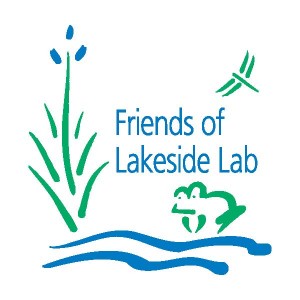by Public Art & Ecology AIRs - Space Saloon
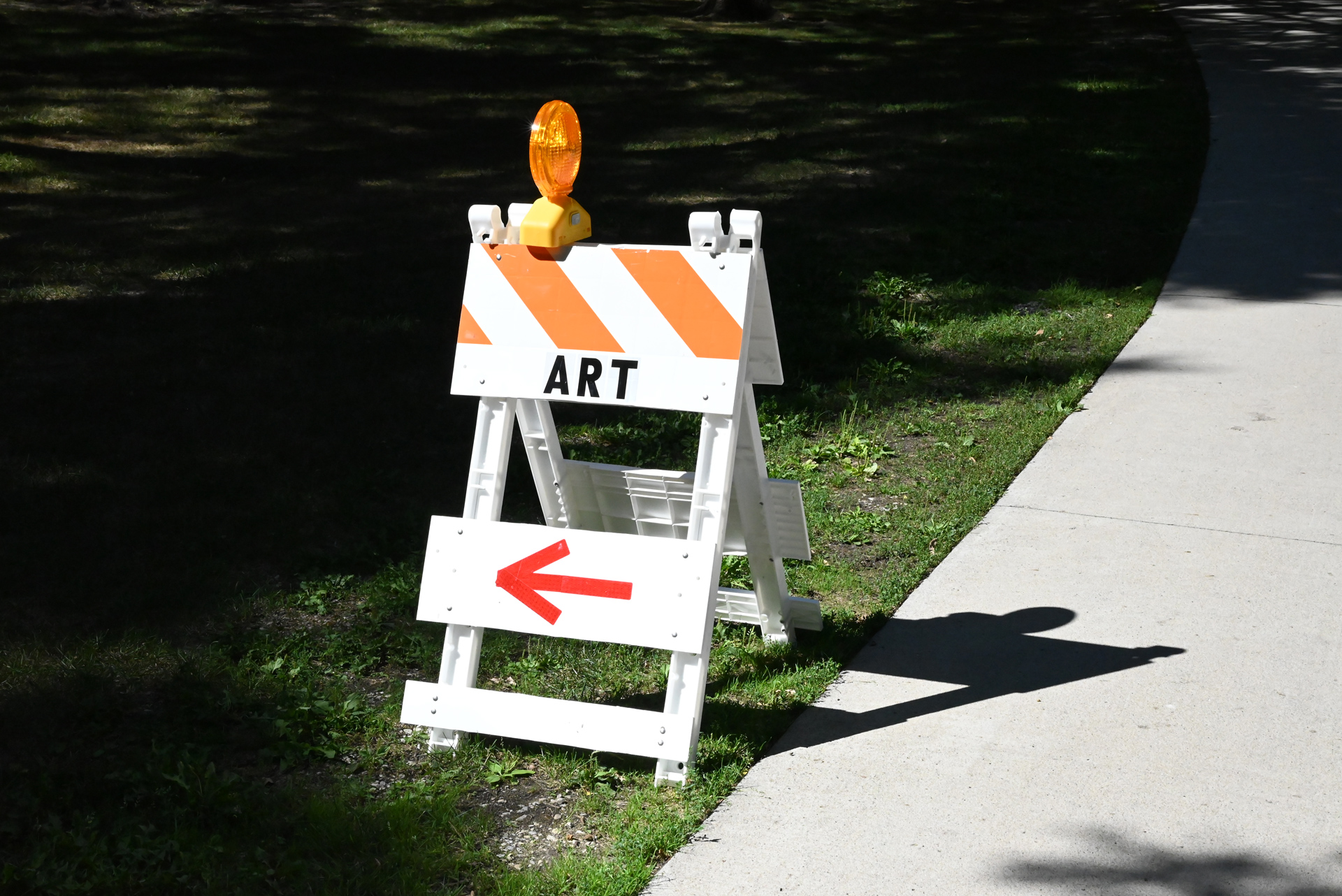
Imagine Iowa Great Lakes and the Iowa Lakeside Lab hosted a series of public events produced as a result of the inaugural Public Art and Ecology Residency. For the 2021 Summer, the artist collective Space Saloon spent three months in Northwest Iowa, observing the region’s landscapes and diverse ecosystems. Their reactions and results were on display in the form of pop-up installations, site-specific sculptures and multi-species performances.
The events presented public data in new and interactive ways, encouraging an engagement with the physical and invisible ecologies found around the lakes. Space Saloon augmented the installations with AR applications, spatial audio and data visualizations, developed through interactions with Iowa Lakeside Lab resident scientists (including botany, archaeology, ornithology), field-researchers, lab technicians, students and other resident artists.
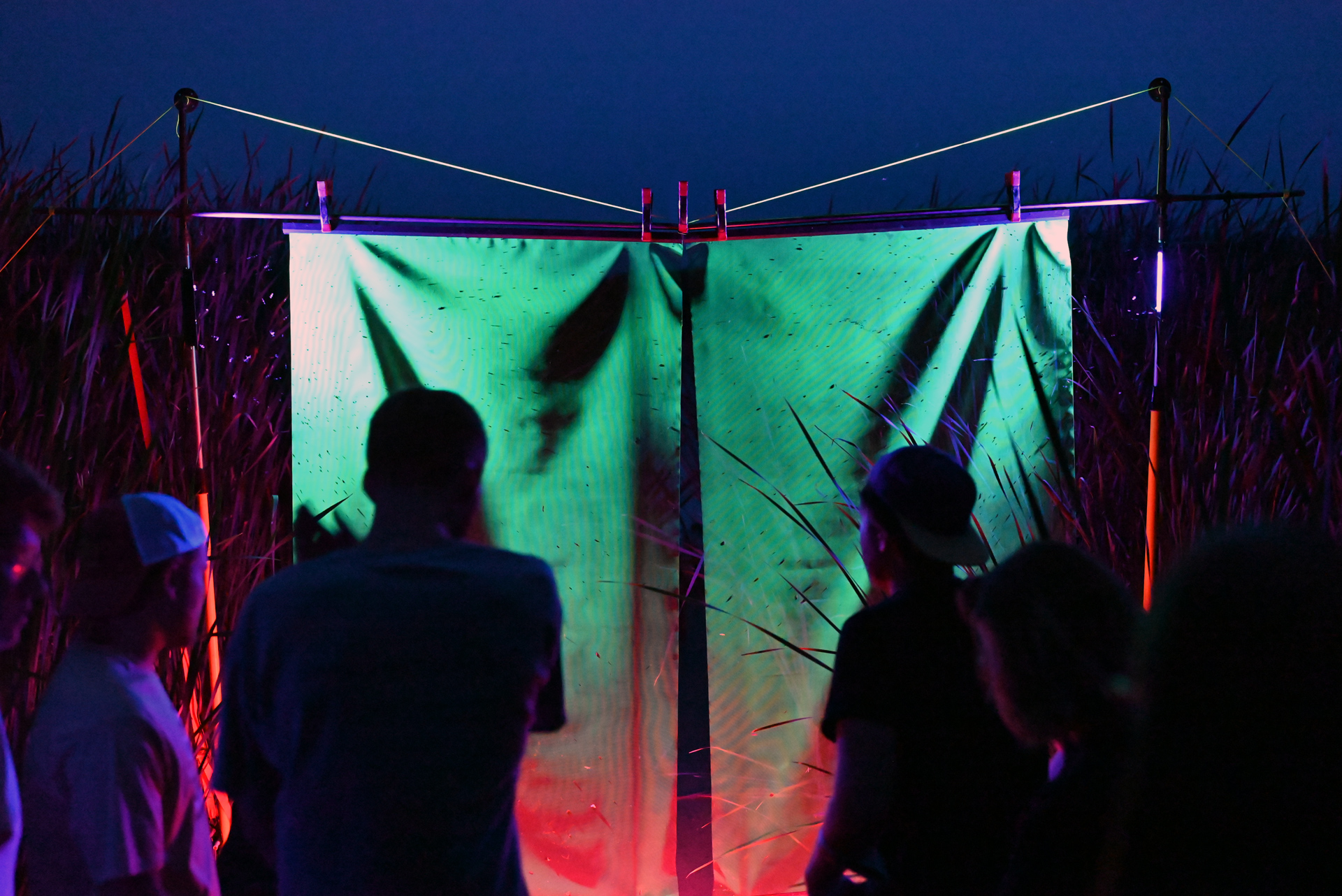
Project 1
This installation immersed visitors in a spectrum of ambient UV and infrared light meant for attracting various species of insects and amphibians. The ‘frog dinner theater’ took place at dusk at Marble Lake and drew attention to the lake’s unique and important aquatic ecosystems.
Due to their evolutionary adaptation, fish and amphibians can shift their vision from terrestrial environments to the light environments of streams and wetlands where mud and algae filter out light from the blue end of the visual spectrum. Bullfrogs are particularly adept at simultaneously looking up into the air and down into the water, through an enzyme (closely linked to Vitamin A) found in the upper half of their eyes. While insects, having certain photoreceptor cells in their compound eyes, are particularly sensitive to UV light wavelengths.
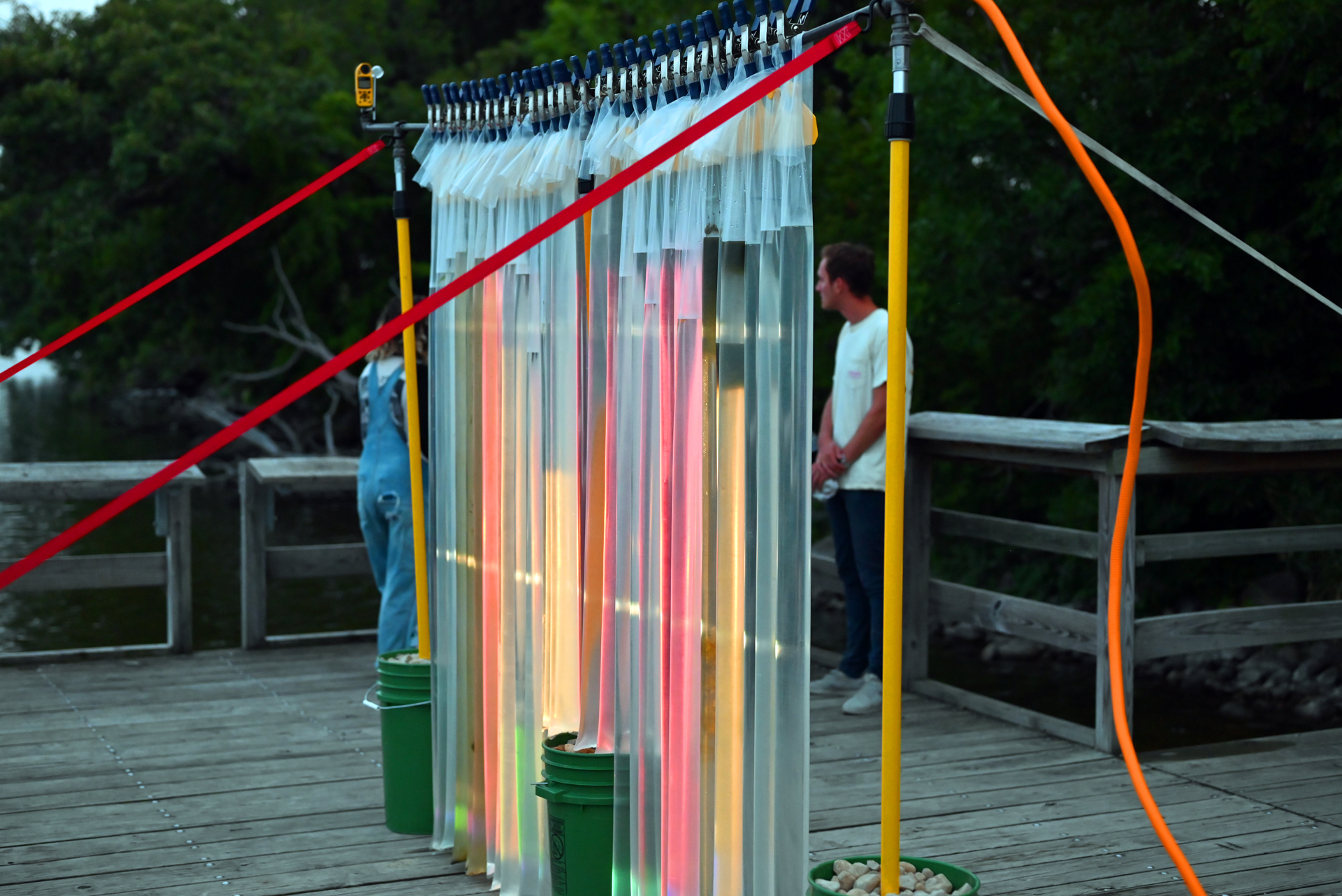
Project 2
Temporarily located along Center Lake’s edge, this pop-up displayed water samples collected from all the public beaches of the Iowa Great Lakes. Visual interpretations of E. coli and blue-green algae data sets were projected onto the samples to create an immersive and informative environment.
Combined sewer overflows, agricultural runoff, and animal waste contribute to the high levels of bacteria that can be found in lake ecosystems. With regard to unsafe levels of E. coli, the bacteria count can trigger a public swimming advisory at 126 colonies per 100 millimeters of water – a “geometric mean” limit set by the EPA. Iowa has a “one-time” standard trigger at 235. The results, however, take time to process at a laboratory and may not reflect current conditions accurately enough. General knowledge says avoid recreation in the lakes a few days after it rains — the added water essentially flushes the county into the lakes.
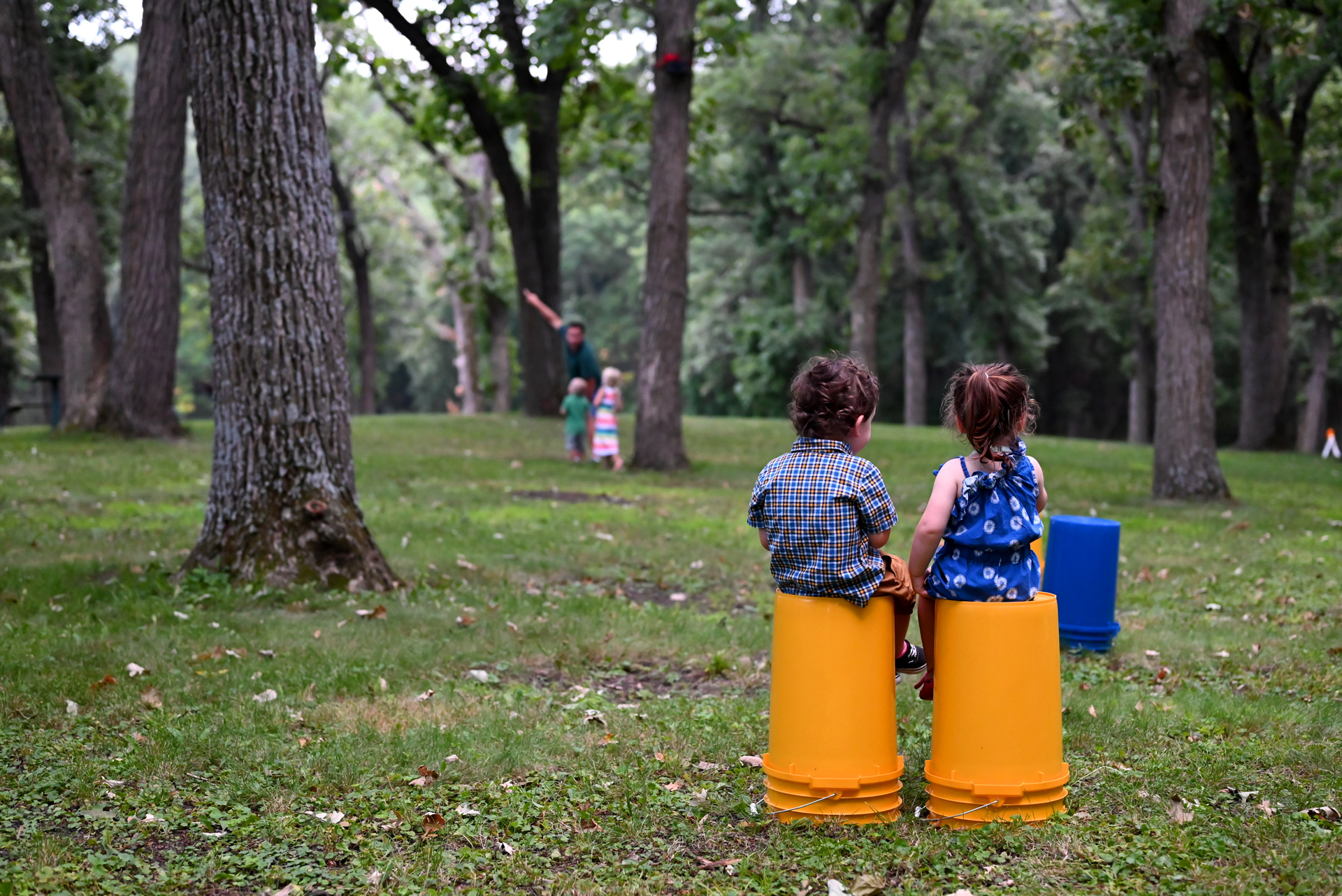
Project 3
The public was invited to explore the unique sounds of Iowa’s Great Lakes in this immersive art installation. Field recordings of local animals, aquatic creatures and human activities found in the region were installed in wooded areas around the lakes, drawing attention to the complex acoustic atmospheres of Okoboji.
What are the implications for wildlife, particularly given how important sound production and hearing are for a range of behaviours, such as locating food, avoiding predators and finding a mate? In terrestrial habitats, bird diversity and abundance has been shown to decline as a result of chronic noise levels around cities and along roadways. A number of species have demonstrated adjustments to their vocal behaviour in an attempt to adapt to the cacophony of human noise. The need to further understand the complex biological effects of noise and establish scientifically relevant thresholds of noise exposure is a priority for human health and wildlife conservation.
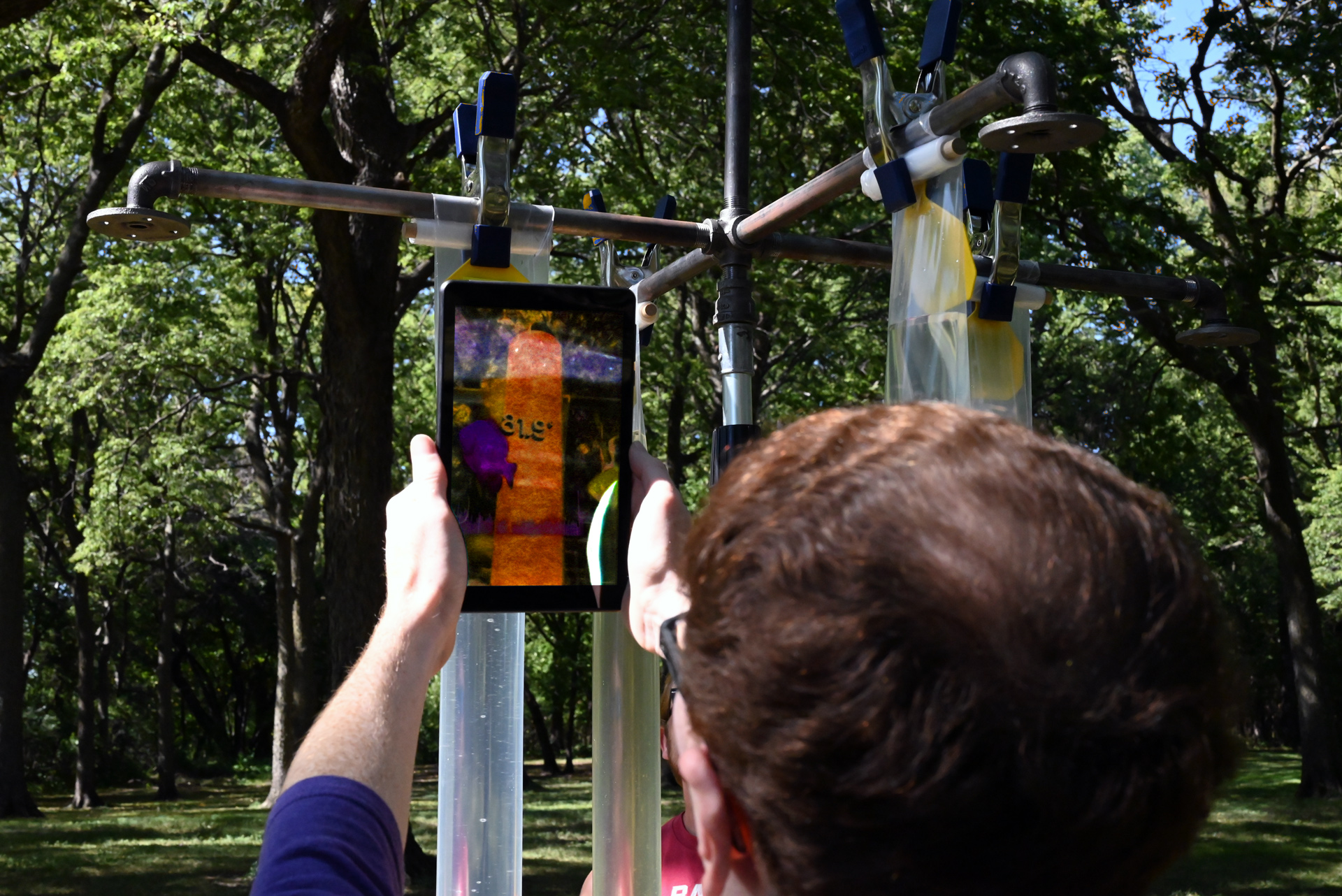
Project 4
This installation at the Blue Water Festival and Art in the Park displayed four visual samples collected from a range of lakes. By using the supplied tablet, public visitors could experience a prototype augmented reality (AR) application. This AR app displayed the most current data from volunteer lake monitors in a visual and experiential format.
The Cooperative Lakes Area Monitoring Project (CLAMP) is a volunteer lake monitoring program started in 1999 by Iowa Lakeside Lab and Friends of Lakeside Lab. Volunteers collect water samples throughout the summer on nine lakes in Dickinson County, Iowa. The goal of CLAMP is to provide long term monitoring data for algae conditions and educate local citizens about lake ecology. Bi-monthly monitoring data is tested and shared from over 20 sites across the lakes, from phosphorus and nitrogen levels to temperature, dissolved oxygen and water clarity.
2021 Public Art & Ecology Artist-in-Residence:
Space Saloon is a collective of architects, artists and researchers, led by Danny Wills, Gian Maria Socci and Rebecca van Beeck. Their projects build communities, promote learning and foster engagement through the production of transdisciplinary forms of knowledge.
hello@spacesaloon.org
@space_saloon
www.spacesaloon.org
Supported by:
Iowa Lakeside Lab
Imagine Iowa Great Lakes
Research and Project Assistant:
Emma Onstad
Installation Volunteers:
Mari McClure, Colton Chambers, Garrett Warren, Travis Scheirer, Noémie Despland-Lichtert, Brendan Shea, Charity McDaniel, Ross Fix
Special Thanks:
Iowa Department of Natural Resources
Okoboji Protective Association
Friends of Lakeside Lab
Pearson Lakes Art Center




